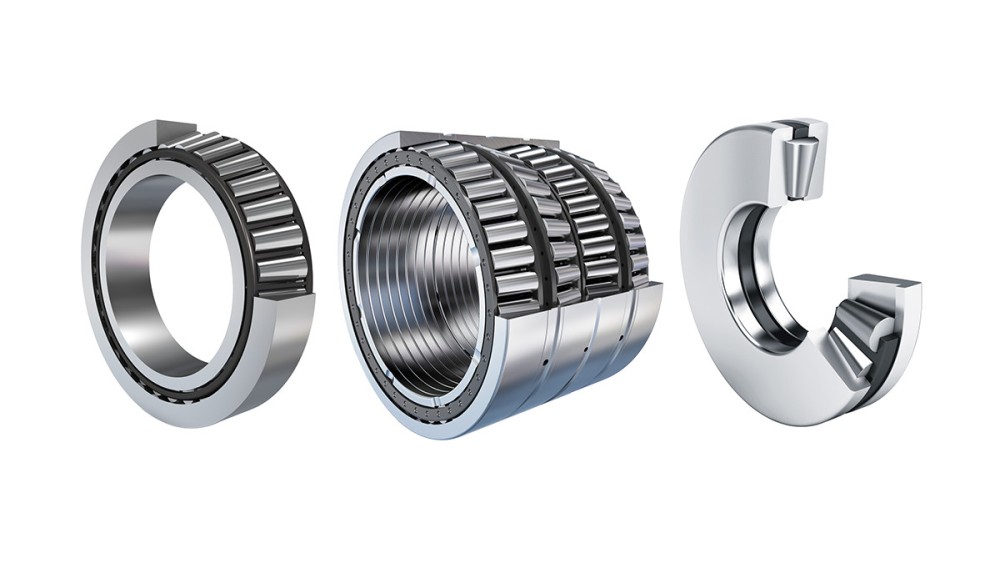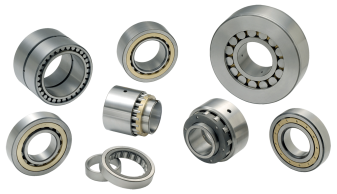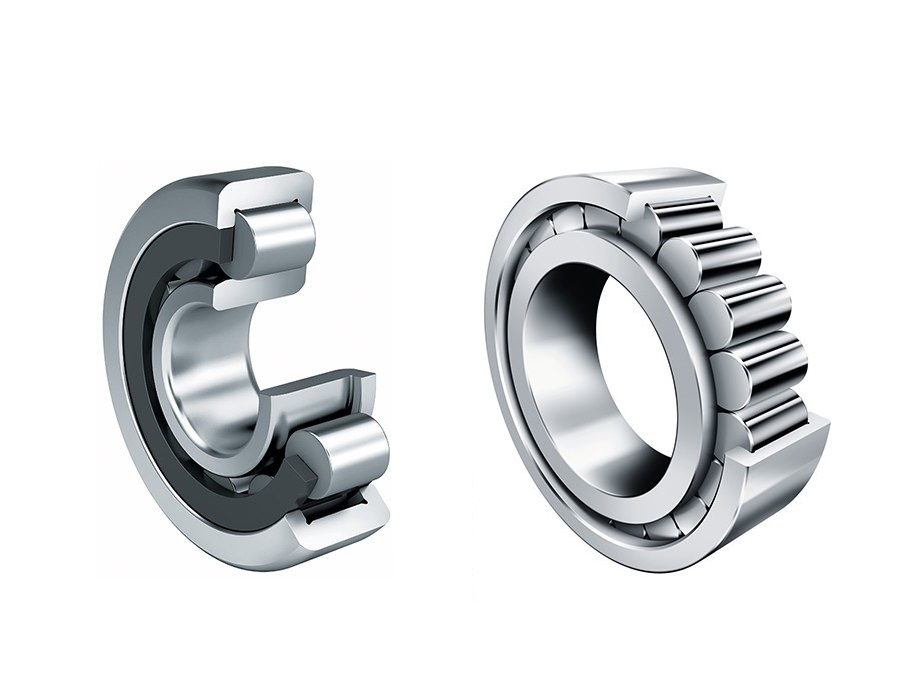Product Description
NU2207ECP CZPT Cylindrical Roller Bearing Nu2207em CZPT Bearing
Bearing introduction
cylindrical roller bearing , Cylindrical roller and race for line contact bearing. Load capacity is big, mainly bear radial load .
1. Friction coefficient is small, suitable for high speed limit speed close to deep groove ball bearings
2.N and NU type axial movement, can adapt to shaft caused by thermal expansion or installation error and shell the change of relative position, can be used for free end bearing
3. On the shaft or hole of the processing and the demand is higher, bearing outer axis relative deflection after installation to be kept under strict control, so as not to cause contact stress concentration
4. Inner ring or outer ring separable, easy to install and remove
N1 8571202 10571202
13571202 15571202 18571202 20571202 25571202 30571202
7571904 8571904 10571904 13571904 15571904 20571904 25571904
30571904 35571904 40571904 43571904 45571904 50571904 55571904
8571305 10571305 13571305
Production information
| Boundary Dimenssion (mm) | Mass (KG) | Bearing Numbers | Basic Load Ratings(KN) | Limited Speed(rpm) | ||||||
| d | D | B | r1min | rsmin | approx | Type | Cr | Cor | Grease | Oil |
| 15 | 35 | 11 | 0.6 | 0.3 | 0.05 | N202 | 12.7 | 10.4 | 20000 | 22000 |
| 35 | 11 | 0.6 | 0.3 | 0.05 | NJ202 | 12.7 | 10.4 | 20000 | 22000 | |
| 35 | 11 | 0.6 | 0.3 | 0.05 | NU202 | 12.7 | 10.4 | 20000 | 22000 | |
| 17 | 40 | 12 | 0.6 | 0.3 | 0.06 | N203 | 17.6 | 14.6 | 10000 | 18000 |
| 40 | 12 | 0.6 | 0.3 | 0.06 | NJ203 | 14.5 | 12.8 | 18000 | 18000 | |
| 20 | 47 | 14 | 1.0 | 0.6 | 0.109 | N204 | 16.6 | 13.9 | 17000 | 20000 |
| 47 | 14 | 1.0 | 0.6 | 0.111 | NJ204 | 16.6 | 13.9 | 17000 | 20000 | |
| 47 | 14 | 1.0 | 0.6 | 0.111 | NU204 | 16.6 | 13.9 | 17000 | 20000 | |
| 52 | 15 | 1.1 | 0.6 | 0.149 | N304 | 23.1 | 19.2 | 14000 | 17000 | |
| 52 | 15 | 1.1 | 0.6 | 0.153 | NJ304 | 23.1 | 19.2 | 14000 | 17000 | |
| 52 | 15 | 1.1 | 0.6 | 0.153 | NU304 | 23.1 | 19.2 | 14000 | 17000 | |
| 25 | 52 | 15 | 1.0 | 0.6 | 0.134 | N205 | 18.8 | 17 | 14000 | 16000 |
| 52 | 15 | 1.0 | 0.6 | 0.137 | NJ205 | 18.8 | 17 | 14000 | 17000 | |
| 52 | 18 | 1.1 | 0.6 | 0.17 | NJ2205V | 35.3 | 29.4 | 12000 | 25000 | |
| 52 | 15 | 1.0 | 0.6 | 0.137 | NU205 | 18.8 | 17 | 14000 | 16000 | |
| 62 | 17 | 1.1 | 1.1 | 0.235 | N305 | 31.5 | 27.7 | 12000 | 14000 | |
| 62 | 17 | 1.1 | 1.1 | 0.241 | NJ305 | 31.5 | 27.7 | 12000 | 14000 | |
| 62 | 17 | 1.1 | 1.1 | 0.241 | NU305 | 31.5 | 27.7 | 12000 | 14000 | |
| 62 | 24 | 1.1 | 1.1 | 0.37 | NJ2305V | 67 | 72.7 | 7200 | 10000 | |
| 30 | 62 | 16 | 1.0 | 0.6 | 0.203 | N206 | 24.9 | 23.3 | 12000 | 14000 |
| 62 | 16 | 1.0 | 0.6 | 0.207 | NJ206 | 24.9 | 23.3 | 12000 | 14000 | |
| 62 | 16 | 1.0 | 0.6 | 0.207 | NU206 | 24.9 | 23.3 | 12000 | 14000 | |
| 72 | 19 | 1.1 | 1.1 | 0.35 | N306 | 38.5 | 35 | 10000 | 12000 | |
| 72 | 19 | 1.1 | 1.1 | 0.358 | NJ306 | 38.5 | 35 | 10000 | 12000 | |
| 72 | 19 | 1.1 | 1.1 | 0.358 | NU306 | 38.5 | 35 | 10000 | 12000 | |
| 35 | 72 | 17 | 1.1 | 0.6 | 0.289 | N207 | 35.5 | 34 | 11000 | 12000 |
| 72 | 17 | 1.1 | 0.6 | 0.295 | NJ207 | 35.5 | 34 | 11000 | 12000 | |
| 72 | 17 | 1.1 | 0.6 | 0.295 | NU207 | 35.5 | 34 | 11000 | 12000 | |
| 80 | 21 | 1.5 | 1.1 | 0.451 | N307 | 49.5 | 47 | 9000 | 11000 | |
| 80 | 21 | 1.5 | 1.1 | 0.461 | NJ307 | 49.5 | 47 | 9000 | 11000 | |
| 80 | 21 | 1.5 | 1.1 | 0.461 | NU307 | 49.5 | 47 | 9000 | 11000 | |
| 80 | 21 | 1.5 | 1.5 | 0.536 | NUP307V | 77.2 | 78.6 | 10000 | 23000 | |
| 40 | 80 | 18 | 1.1 | 1.1 | 0.37 | N208 | 43.5 | 43 | 9400 | 11000 |
| 80 | 18 | 1.1 | 1.1 | 0.387 | NJ208 | 43.5 | 43 | 9400 | 11000 | |
| 80 | 18 | 1.1 | 1.1 | 0.378 | NU208 | 43.5 | 43 | 9400 | 11000 | |
/* March 10, 2571 17:59:20 */!function(){function s(e,r){var a,o={};try{e&&e.split(“,”).forEach(function(e,t){e&&(a=e.match(/(.*?):(.*)$/))&&1
| Rolling Body: | Roller Bearings |
|---|---|
| The Number of Rows: | Single |
| Outer Dimension: | Small and Medium-Sized (60-115mm) |
| Material: | Bearing Steel |
| Spherical: | Aligning Bearings |
| Load Direction: | Radial Bearing |
| Samples: |
US$ 4/Set
1 Set(Min.Order) | |
|---|
| Customization: |
Available
| Customized Request |
|---|
Can you Explain the Concept of Bearing Clearance in Tapered Roller Bearings?
Bearing clearance, also known as internal clearance, refers to the space or gap between the various components of a tapered roller bearing when it is not under load. This clearance exists to accommodate the thermal expansion of the bearing components, ensure proper lubrication, and prevent excessive interference during operation. Here’s how bearing clearance works in tapered roller bearings:
- Thermal Expansion:
As tapered roller bearings operate, they generate heat due to friction and loading. This heat causes the bearing components, including the inner and outer rings, rollers, and cage, to expand. Bearing clearance provides the necessary space for these components to expand without causing binding or excessive load on the rolling elements.
- Lubrication Film:
The lubricant within the bearing forms a thin film between the rolling elements and raceways. Bearing clearance ensures that the rolling elements can move smoothly within this lubrication film, reducing friction and wear.
- Operating Conditions:
Bearing clearance affects the behavior of the bearing under different operating conditions. Excessive clearance can lead to vibration, noise, and reduced load-carrying capacity, while insufficient clearance may result in increased friction, heat generation, and premature failure.
- Types of Clearance:
Tapered roller bearings can have various types of clearance, including radial clearance (between the rollers and raceways) and axial clearance (along the bearing axis). The choice of clearance depends on the application’s requirements and the desired balance between load capacity and internal stress.
- Preload vs. Clearance:
Preload, which is the application of a controlled axial force, eliminates internal clearance and optimizes the distribution of load between rolling elements. In contrast, bearing clearance provides the necessary space for thermal expansion and lubrication, albeit at the cost of increased play.
- Application-Specific Considerations:
The optimal bearing clearance varies depending on factors such as the application’s operating temperature, speed, and load magnitude. Engineers carefully select the appropriate clearance to ensure optimal bearing performance.
- Measuring Clearance:
Bearing clearance can be measured using specialized instruments or techniques that assess the gap between components when the bearing is not under load.
Proper bearing clearance is crucial to maintaining optimal performance, minimizing wear, and preventing premature failure in tapered roller bearings. It is a critical factor that engineers consider when selecting and designing bearings for specific applications.
What is the impact of proper lubrication on the performance and lifespan of cylindrical roller bearings?
Proper lubrication plays a crucial role in the performance and lifespan of cylindrical roller bearings. Lubrication is essential for reducing friction, minimizing wear, dissipating heat, and preventing corrosion. Let’s explore the impact of proper lubrication in more detail:
- Friction Reduction:
Proper lubrication forms a thin film of lubricant between the rolling elements and raceways of cylindrical roller bearings. This lubricant film separates the surfaces and reduces direct metal-to-metal contact. As a result, friction and sliding resistance are significantly reduced. The reduction in friction helps to minimize energy loss, improve efficiency, and reduce wear on the bearing components.
- Wear Prevention:
Lubrication creates a protective barrier between the rolling elements and raceways, preventing excessive wear. The lubricant film prevents metal-to-metal contact and acts as a cushion, absorbing shock and distributing the load evenly. By reducing wear, proper lubrication helps to prolong the lifespan of cylindrical roller bearings, ensuring reliable performance over an extended period.
- Heat Dissipation:
During operation, cylindrical roller bearings generate heat due to friction. Proper lubrication helps dissipate this heat by carrying it away from the bearing surfaces. The lubricant absorbs and transfers the heat, preventing excessive temperature buildup that could lead to premature failure. Effective heat dissipation through proper lubrication helps maintain the bearing’s operational stability and prevents thermal damage.
- Prevention of Corrosion:
Lubrication acts as a protective layer, preventing the direct contact of moisture or contaminants with the bearing surfaces. This barrier helps to inhibit corrosion and the formation of rust on the bearing components. By keeping the surfaces clean and protected, proper lubrication aids in maintaining the integrity and longevity of cylindrical roller bearings, especially in challenging environments.
- Noise Reduction:
Proper lubrication contributes to reducing noise and vibration in cylindrical roller bearings. The lubricant film acts as a cushion, damping the vibrations and reducing the generation of noise during operation. This is particularly important in applications where noise reduction is critical, such as precision machinery or equipment operating in quiet environments.
- Contamination Control:
Proper lubrication helps in controlling and minimizing the ingress of contaminants into cylindrical roller bearings. The lubricant forms a barrier that helps prevent the entry of dirt, dust, and other particles that could lead to premature wear or damage. By maintaining cleanliness, proper lubrication enhances the overall performance and reliability of the bearing.
In summary, proper lubrication is essential for optimizing the performance and extending the lifespan of cylindrical roller bearings. It reduces friction, minimizes wear, dissipates heat, prevents corrosion, reduces noise, and controls contamination. Bearing manufacturers and operators must follow recommended lubrication practices, including selecting the appropriate lubricant type and viscosity, ensuring proper lubricant replenishment, and adhering to scheduled maintenance intervals, to maximize the benefits of lubrication and ensure the long-term reliability of cylindrical roller bearings.
How do cylindrical roller bearings contribute to reduced friction and heat generation?
Cylindrical roller bearings play a crucial role in reducing friction and minimizing heat generation in various applications. Let’s explore how these bearings contribute to these important factors:
- Rolling Motion:
Cylindrical roller bearings facilitate rolling motion between the inner and outer rings, as well as the cylindrical rollers. This rolling motion significantly reduces friction compared to sliding or rubbing contact. Instead of sliding against each other, the rolling elements roll smoothly over the raceways, resulting in lower frictional forces. The reduced friction helps to minimize energy loss and heat generation within the bearing.
- Precision Manufacturing:
Cylindrical roller bearings are precision-engineered components manufactured to tight tolerances. The surfaces of the rollers and raceways are carefully finished to ensure smooth and precise contact. The high precision in the bearing’s construction minimizes irregularities and imperfections that could cause increased friction and heat generation. By maintaining close tolerances, cylindrical roller bearings optimize performance and reduce frictional losses.
- Lubrication:
Proper lubrication is essential for reducing friction and heat in cylindrical roller bearings. Lubricants create a thin film between the rolling elements and raceways, separating them and minimizing direct metal-to-metal contact. This lubricant film acts as a protective barrier, reducing friction and dissipating heat generated during operation. Adequate lubrication also helps to prevent wear, corrosion, and premature failure of the bearing.
- Cage Design:
Cylindrical roller bearings often incorporate a cage or separator that spaces and guides the rollers. The cage retains the individual rollers in their proper positions, preventing them from contacting and rubbing against each other. This design feature not only maintains the integrity of the rolling elements but also reduces friction and heat generation by minimizing contact between adjacent rollers. The cage also helps to maintain proper lubricant distribution throughout the bearing.
- Efficient Load Distribution:
Cylindrical roller bearings have a line contact between the rollers and raceways, which enables efficient load distribution. The cylindrical shape of the rollers allows them to bear loads along their length, spreading the load over a larger surface area compared to other bearing types. This even distribution of the load reduces localized stresses and friction at specific contact points, resulting in reduced heat generation.
- Heat Dissipation:
Cylindrical roller bearings are typically designed with features that facilitate heat dissipation. They may incorporate special heat-treated components, such as rings and rollers, that have enhanced heat resistance properties. Additionally, the bearing design may include features such as grooves, holes, or special surface coatings to improve heat dissipation and prevent the buildup of excessive temperatures within the bearing assembly.
By minimizing friction and heat generation, cylindrical roller bearings contribute to improved efficiency, reduced energy consumption, and extended bearing life. These factors are crucial in various applications where the performance, reliability, and longevity of rotating machinery are critical considerations.
editor by CX 2024-02-25




